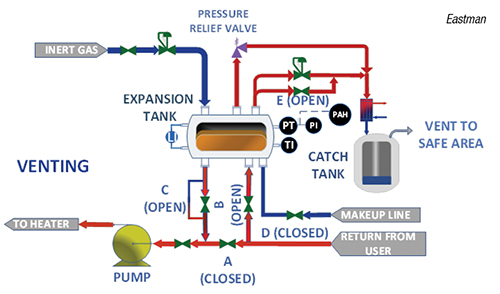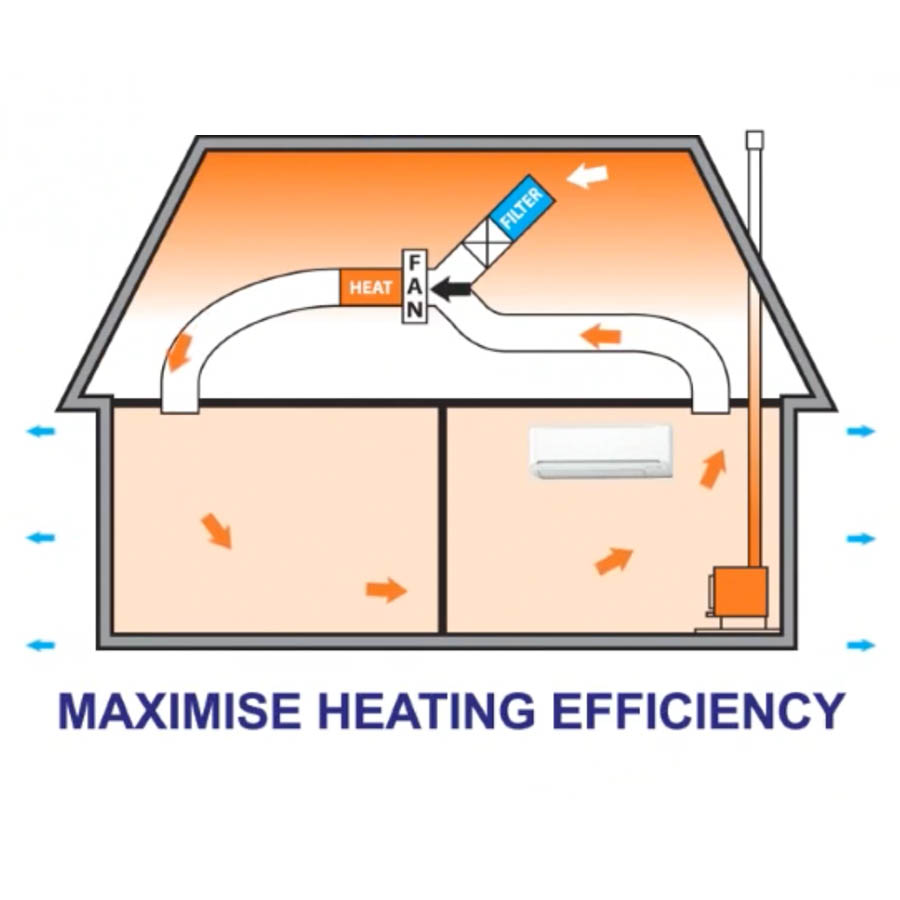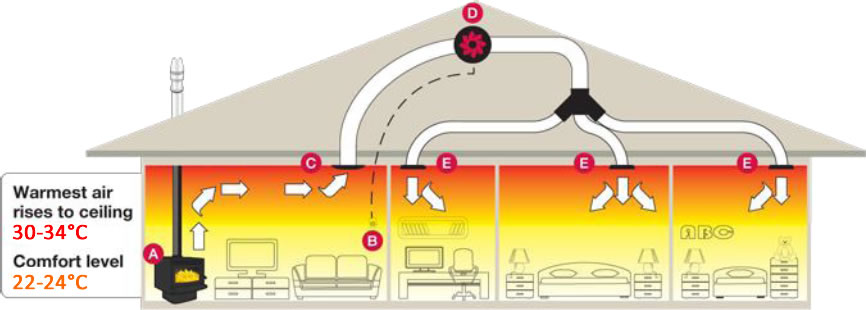Best Practices for Using DVS Heat Transfer Systems in Data Centers
Wiki Article
The Role of Heat Transfer Solutions in Sustainable Energy Solutions for the Future
Heat transfer systems are crucial in the mission for sustainable energy solutions. They optimize thermal energy administration, boosting the efficiency of sustainable modern technologies. By employing systems like transmission, convection, and radiation, these systems reduce power losses. Their duty in solar thermal and geothermal applications is especially considerable. As technologies arise, the potential for additional advancements increases vital inquiries regarding future energy methods. What growths will shape the landscape of sustainable power?Understanding Heat Transfer Solutions

The Significance of Thermal Power Management
Efficient thermal power administration is important for making the most of power efficiency and reducing waste in various systems. By controling temperature and maximizing Heat transfer procedures, companies can markedly reduce power intake and operational costs. Reliable monitoring involves the execution of innovative modern technologies and practices that keep an eye on and manage thermal problems within systems, ensuring that power sources are utilized efficiently. Furthermore, correct thermal power monitoring adds to minimizing greenhouse gas exhausts, straightening with international sustainability objectives. It also enhances system integrity and performance, bring about improved item high quality and longer equipment lifespan. Inevitably, prioritizing thermal energy administration is a vital step in the direction of developing much more sustainable power services and promoting an accountable technique to power intake in residential and commercial contexts.Applications of Heat Transfer in Renewable Resource
While various renewable resource resources assure sustainability, the effective application of Heat transfer plays an essential function in their efficiency. In wind energy systems, Heat transfer is made use of for turbine component cooling, enhancing efficiency and durability. Geothermal power relies upon effective Heat exchange in between the planet's subsurface and the fluid flowing in the system, making best use of power extraction. Biomass power processes also benefit from Heat transfer, as it aids in transforming organic products into usable fuel via pyrolysis and gasification. In addition, in hydropower, preserving excellent temperatures in tanks can improve energy output. Each of these applications shows the important relevance of Heat transfer systems in boosting eco-friendly energy modern technologies, inevitably adding to an extra lasting power future.Enhancing Solar Thermal Power Effectiveness
As solar thermal power systems continue to develop, boosting their performance has actually come to be essential for optimizing energy outcome. Breakthroughs in Heat transfer innovations, such as improved thermal storage materials and ingenious Heat exchangers, play a considerable role in boosting efficiency. By using sophisticated products that have superior thermal conductivity, systems can catch and transfer Heat a lot more efficiently. Furthermore, integrating monitoring systems that follow the sunlight's course assurances that enthusiasts obtain suitable solar direct exposure throughout the day. Using nanotechnology in solar absorbers can better enhance power absorption prices. Including automated control systems assists handle and regulate temperature levels power circulation successfully, leading to decreased losses and boosted general system effectiveness. These improvements pave the method for even more lasting solar thermal energy solutions in the future.Geothermal Heating: A Lasting Option
Geothermal heating provides a feasible choice for lasting power, providing significant environmental advantages through reduced greenhouse gas exhausts. Its performance and cost-effectiveness make it an appealing alternative to standard heating systems. Difficulties connected to application must be addressed to maximize its potential impact.Ecological Benefits of Geothermal
Traditional home heating approaches contribute substantially to greenhouse gas discharges, geothermal heating offers an engaging alternative that lessens ecological impact. By using the Planet's internal Heat, geothermal systems use a renewable resource resource, significantly reducing dependence on fossil gas. This approach creates minimal carbon exhausts, making it a cleaner alternative for industrial and residential heating. Additionally, geothermal systems promote power performance, as they call for much less energy compared to traditional furnace. DVS Heat Transfer Systems. The utilization of geothermal power likewise aids in decreasing air pollution, enhancing regional air quality and public wellness. As a sustainable remedy, geothermal heating supports climate modification reduction initiatives, placing itself as a crucial part in the shift towards a greener futureEfficiency and Cost-Effectiveness
How does geothermal home heating gauge up in regards to effectiveness and cost-effectiveness compared to standard home heating systems? Geothermal heating demonstrates superior effectiveness, often accomplishing a coefficient of performance (POLICE) of 3 to 5, meaning it generates three to five devices of Heat for every single system of electrical power eaten. This effectiveness translates right into lower operating expenses, particularly in areas with steady geothermal sources. Initial setup prices can be higher than traditional systems; nevertheless, long-lasting financial savings on power costs and minimized maintenance costs can offset these ahead of time financial investments. Furthermore, numerous federal governments incentivize geothermal systems with refunds and tax debts, enhancing their cost-effectiveness. Overall, geothermal heating arises as a economically practical and lasting choice to even more conventional home heating remedies.Application Challenges and Solutions
Countless challenges can hinder the widespread execution of geothermal heater, in spite of their clear benefits as a lasting energy option. High initial installment prices often discourage home owners and investors, making funding a substantial barrier. In addition, the geographical constraints of suitable geothermal websites restrict access in certain areas. Local regulations and allowing processes can additionally complicate job development, causing hold-ups. In addition, public recognition and understanding of geothermal systems stay low, impeding approval. To resolve these difficulties, targeted education and learning projects can improve public knowledge, while government rewards could relieve economic concerns. Teaming up with neighborhood authorities to streamline regulations may assist in smoother task approvals, eventually advertising the fostering of geothermal heating as a practical, lasting power alternative.Developments in Heat Transfer Technologies
Technologies in Heat transfer modern technologies play a crucial function in boosting energy performance and sustainability. Advanced Heat exchangers and phase change products are at the forefront of these growths, offering significant enhancements in thermal monitoring. These technologies not only optimize energy usage yet additionally add to lowering ecological effect in various applications.Advanced Heat Exchangers
Advanced Heat exchangers play a go to this site necessary role in improving power performance throughout various applications in lasting energy remedies. These devices facilitate the transfer of Heat in between 2 or more liquids, considerably reducing energy consumption in processes such as industrial heating, cooling, and power generation. Developments in materials and layout, such as the usage of nanofluids and small arrangements, have brought about enhanced thermal efficiency and minimized dimension demands. In addition, developments in digital monitoring and control systems allow for maximized operation, further increasing effectiveness. By reducing waste Heat and maximizing power recovery, advanced Heat exchangers add to lower carbon impacts and support the shift toward environmentally friendly technologies. Their continued growth is important for achieving international energy sustainability goals.
Phase Change Materials
The assimilation of stage modification materials (PCMs) into Heat transfer modern technologies represents a significant advancement in power management and efficiency. PCMs absorb and launch thermal energy during their phase adjustments, making it possible for reliable temperature policy in building products and energy systems. By storing excess Heat during top durations and launching it when need increases, PCMs contribute to fill shifting and energy conservation - DVS Heat Transfer Systems. This capability boosts the efficiency of renewable resource systems, especially in solar thermal applications. In addition, PCMs can enhance the thermal comfort of interior environments, decreasing reliance on standard home heating and cooling techniques. As technologies in PCM formulations proceed to emerge, their role in sustainable power remedies is positioned to expand, offering promising methods for future research study and application
Future Leads for Heat Transfer in Lasting Energy
As the demand for sustainable energy services continues to climb, the function of Heat transfer systems is ending up being significantly important fit future technologies. Developments in products and styles are expected to boost effectiveness in Heat transfer, decreasing energy losses in numerous applications. The integration of sophisticated thermal storage space systems, such as phase adjustment materials and thermochemical storage space, will certainly allow much better administration of power sources. Research into nanofluids and biomimetic Heat exchangers might better maximize thermal performance. Additionally, the fostering of smart modern technologies will enable real-time monitoring and adaptive control of Heat transfer processes. These improvements are positioned to substantially contribute to the general efficiency and sustainability of energy systems, leading the way for a much more energy-efficient future.Often Asked Concerns
Just How Can People Carry Out Heat Transfer Solution in your home?

People can execute Heat transfer systems in the house by setting up energy-efficient devices, utilizing radiant heating, and enhancing insulation. These actions enhance energy efficiency, lower prices, and promote lasting practices in residential settings.

What Are the Expenses Related To Setting Up Heat Transfer Solutions?
The prices associated with installing Heat transfer systems differ extensively, generally encompassing equipment, installment labor, and upkeep. Factors such as system kind, home check that dimension, and local regulations significantly influence the total expenditure entailed.Exist Government Incentives for Heat Transfer System Installations?
Federal government rewards for Heat transfer system setups vary by region and can consist of tax obligation discounts, credit reports, and gives. These economic advantages intend to urge fostering, ultimately promoting energy effectiveness and minimizing environmental influence within communities.How Do Heat Transfer Equipments Impact Power Expenses?
Heat transfer systems significantly affect energy costs by maximizing energy efficiency. By enhancing the transfer of Heat, these systems reduce power usage, causing lower energy expenses and producing a more lasting method to power management.What Maintenance Is Required for Heat Transfer Solutions?
Upkeep for Heat transfer systems includes routine evaluations, cleansing of components, checking find more info liquid degrees, making sure appropriate insulation, and replacing used components. These jobs aid keep efficiency, stop malfunctions, and prolong the system's functional lifespan.These systems help with the movement of thermal power from one medium to one more, enabling the transfer of Heat for air conditioning, power, or home heating generation purposes. Geothermal power depends on efficient Heat exchange between the earth's subsurface and the liquid flowing in the system, optimizing power removal. Additionally, geothermal systems advertise energy effectiveness, as they require less power contrasted to traditional heating systems. Advanced Heat exchangers play an important duty in improving energy efficiency across various applications in lasting power remedies. Heat transfer systems notably influence power bills by optimizing energy effectiveness.
Report this wiki page